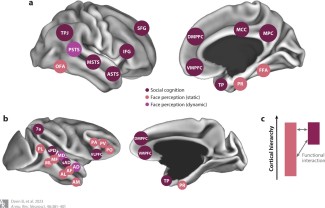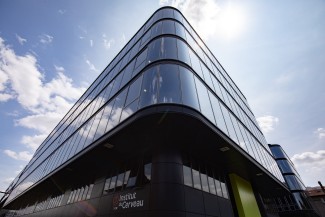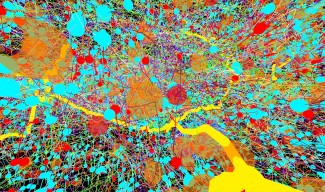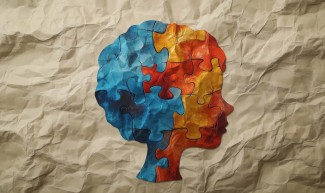Our days are paced by social interactions. What exactly are these? Why are they essential? Where are they born in our brains? What research is being done on them at Paris Brain Institute?
Social interactions are all the reciprocal actions between two or more people, which allow information to be exchanged and provoke an action in return, such as laughing at a joke. These interactions are based on various communication channels, which can be verbal (oral languages) or non-verbal (gestures, facial expressions, body postures, touch...).
At the cognitive level, social interactions involve several faculties, which can be grouped into three levels: first, the detection and perception of "social" stimuli coming from other people, such as the recognition of faces, body postures, voices, touch, phrases or facial expressions; second, the interpretation of these stimuli; and third, the reaction to them, with the adaptation of our behaviours to these stimuli.

Cruciales for more than one reason
Many neuroscientists view social interactions as a basic human need, as important as eating or sleeping. They are essential for developing the ability to communicate and relate to others. They also determine our emotional well-being. Reducing them can have a significant impact on development and mental health. And at any age. Recently, for example, the social distancing measures implemented during the Covid-19 health crisis (closure of businesses, day-care centres and schools, cancellation of large gatherings, etc.) have considerably reduced the possibilities for social interaction. And these measures have been associated with increased anxiety and depression in adults and adolescents in unpredictable ways.
More broadly, social interactions are crucial to our survival: they allow us to develop cooperative strategies to protect ourselves from various threats, to help each other, and to share access to resources.
However, social interactions are complex. Indeed, the management of social relationships within groups may have contributed to changes in the size of the human brain. The "social brain hypothesis" proposes that primate brain size is directly related to social group size. In humans, 150 people would be the maximum size of a group with which a person can maintain stable social ties.
The study of brain activity in the context of social interactions, using brain imaging techniques, has shown the activation of brain regions located throughout the brain: the secondary sensory cortices; the medial prefrontal cortex, at the forehead; the posterior cingulate cortex, around the rear part of the callus body (which connects the two hemispheres of the brain); the temporo-parietal junction, above and behind each ear; the insula and amygdala, at the heart of the brain; the premotor cortex, in the middle and at the top of the brain; the temporal pole, in front of the ears; the lower frontal gyrus, in the lower part of the frontal lobe, located at the level of the forehead; the parietal cortex, behind the frontal lobe; etc. The vast network formed by all these regions constitutes what neuroscientists by extension call "the social brain".
Each of these areas would contribute to the treatment of a specific aspect of social cognition, namely all the cognitive processes (perception, reasoning, emotions, etc.) involved in social interactions. Thus, secondary sensory cortices are associated with the ability to
Recognize the faces, voices, touch of individuals; the medial prefrontal cortex, the posterior cingulate cortex, the temporal pole and the temporo-parietal junction to the ability to understand the intentions and mental states of others; the insula and amygdala, to the interpretation of facial expressions and to the recognition of emotions; and the premotor cortex, the inferior frontal gyrus, and the parietal cortex, to the perception and understanding of the actions of others, thus It is important to note that this is not the case.

Crucial neurons?
Special neurons are often associated with social cognition: mirror neurons, discovered in monkeys in the early 1990s by the team of Giacomo Rizzolatti, a neuroscientist at the Faculty of Medicine in Parma, Italy. Activated when one performs a task and when one observes another person performing that action, and even when one images that action (hence their label "mirrors"), these nerve cells are located in the premotor cortex and the inferior parietal cortex – both involved in social interactions. For some researchers, these neurons are crucial to several faculties that are indispensable for social interactions, including learning by imitation and understanding others. However, for other neuroscientists, mirror neurons may play a broader and not specifically social role in understanding cause and effect relationships between objects or events.
Many areas of the social brain are also part of the neural network that underlies the perception, recognition and regulation of emotions. These include the amygdala, ventromedial prefrontal cortex, cingulate cortex, and insula. This overlap between the social brain and the neural network of emotions facilitates social interactions in different ways. First, affects are social signals that are transmitted through facial expressions, postures, body movements and/or voice intonation. Second, our emotional state may promote or inhibit the search for social interaction. Finally, there is a particular category of emotions, called "social emotions", which are specifically induced by the social context: for example, compassion, shame, or jealousy.
At Paris Brain Institute
At the Brain Institute, the study of social interactions involves the team "Neurophysiology of Social Cognition". One of the aims of their research is to understand how the social network (the whole relationship between people and each other) is represented in the brain and how individuals are perceived through different senses by the brain. To learn more, neuroscientists use neuroimaging and neurophysiology techniques, behavioural tests and physiological recordings in healthy subjects, animal models, and people with neurological disorders.

Autism spectrum disorders
Autism, or autism spectrum disorder, is a neurodevelopmental disorder that has two main symptoms: persistent problems with communication and social interaction in a variety of contexts; and restricted and repetitive behaviour, interests and...
Read more
How do brains of social beings make sense of their societies? The Neurophysiology of Social Cognition team is investigating the neural and neuronal mechanisms that enable transformation of social percepts into social concepts. The team aims to...
Read more





